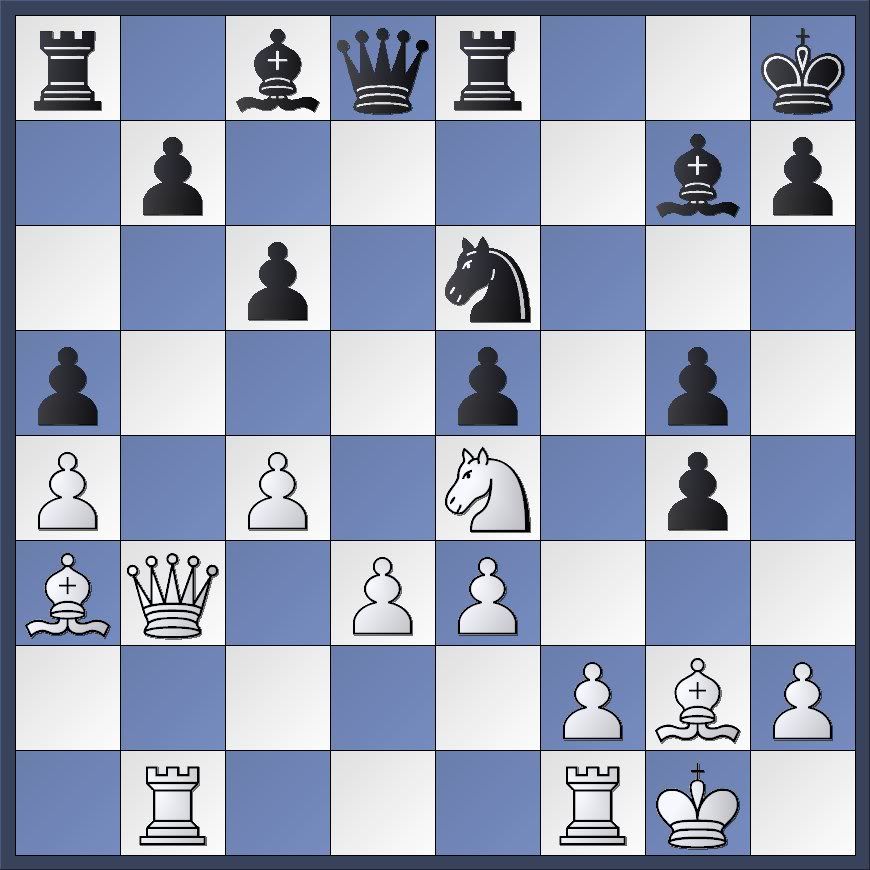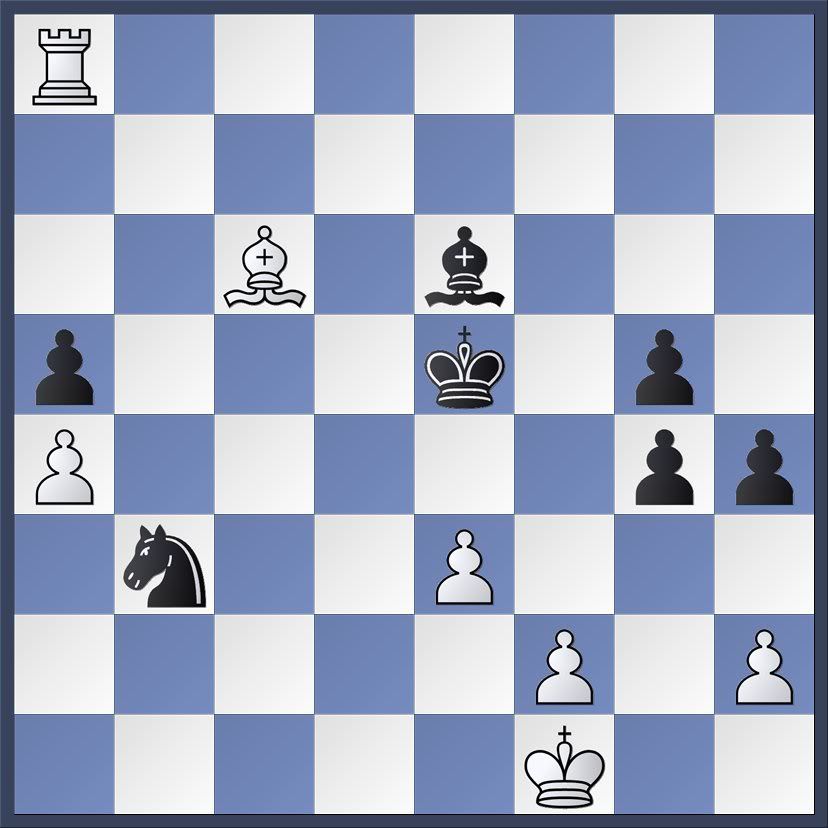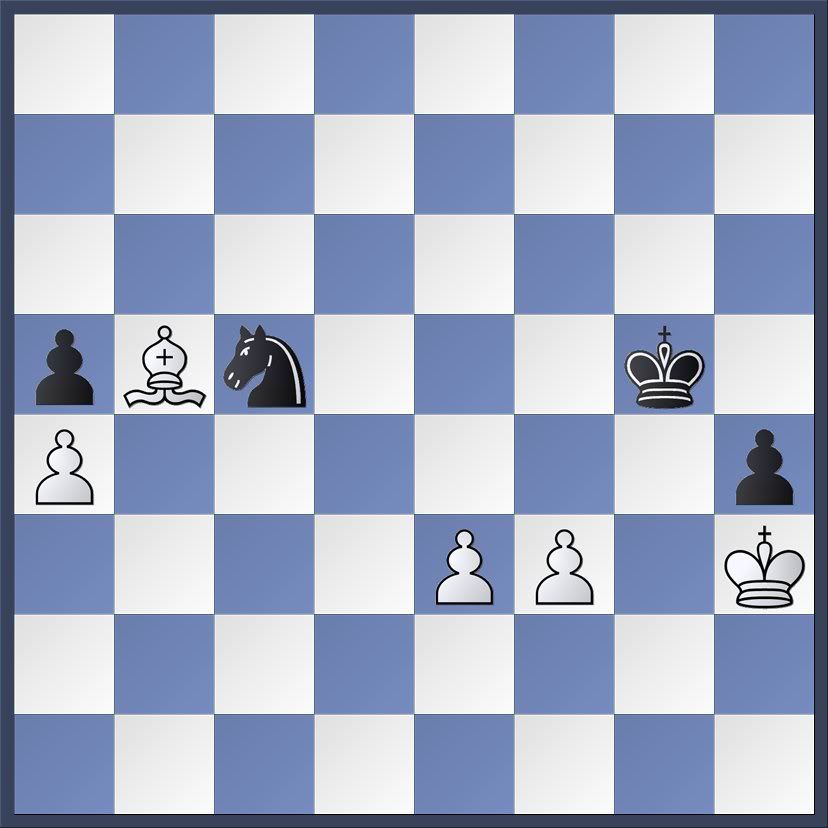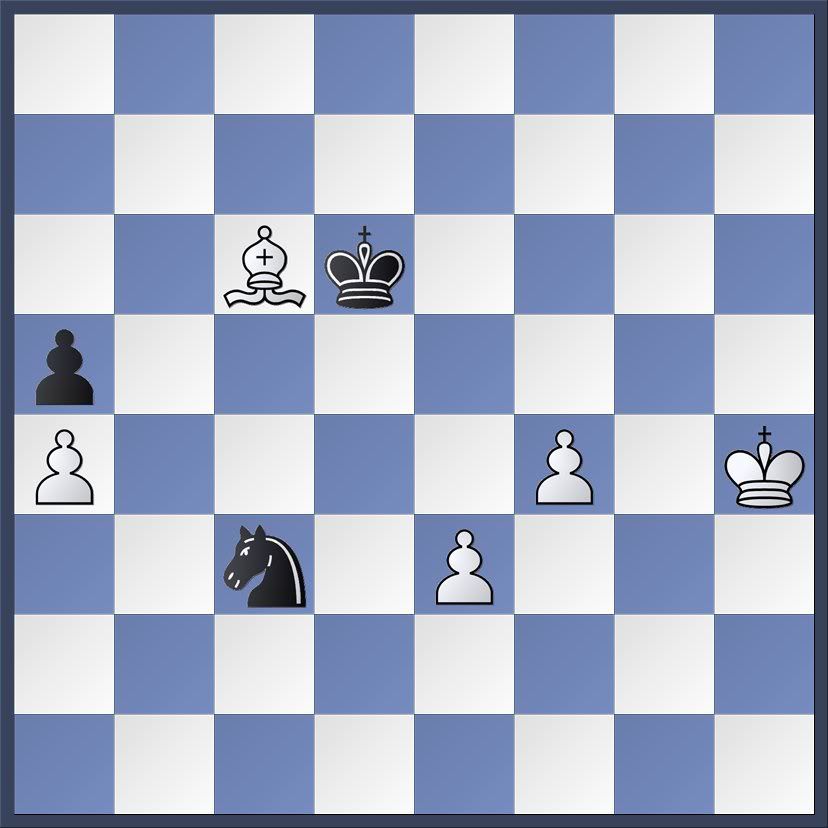In June I set forth a training regimen designed to strengthen my tactical skill in the usual way by solving a specific set of tactical problems. This regimen also had a second purpose: developing my technique at carrying out an attack to completion. I quickly realized that this regimen could help every aspect of my games except developing my opening repertoire.
The plan was thus: spend ninety minutes per week playing set positions against the computer. These set positions are from Fred Reinfeld, 1001 Winning Chess Sacrifices and Combinations (1955). It is not difficult to find the tactic, especially as they are organized by motif. But the resulting position is not always a clear win. In many of the problems, the player on move wins the exchange, which in theory confers a winning advantage. But there are many busts--Reinfeld's solutions often overlook a key defense that changes the evaluation of the position. In other cases, the winning advantage is so slight that nursing it to victory requires expert play.
I have failed. For the first several weeks, indeed through most of the summer, I was diligent. Since then, other interests and responsibilities, my online blitz obsession, and other factors have interfered with my performance of a clear and specific plan for improving my chess skills. Weeks have passed during which I did not solve a single problem from Reinfeld's book. I solved one problem the first day of October, but did not attempt another this month until today.
Since beginning my efforts, I have played to completion seventy problems. Seventy problems over eighteen weeks is less than four per week. Given an average of fifteen minutes per problem, that puts me more than thirty minutes per week behind schedule.
It is time to "get back to the mines," that is, to renew the necessary labor that will yield the riches of chess expertise.
Results
In sixteen of the seventy, Black moves first. In these, White won two, and there were five draws. One of the draws was my second effort on a problem attempted before I began this program. This draw was an improvement, but not yet the success I seek. One of the losses is a bust. My play was competent; Reinfeld's solution was suboptimal. White has a superior position despite the tactice. In the fifty-four problems I've played from the White side, Black has won twelve and drawn fifteen. Four of these are busts, one wins a pawn, and one is the familiar opening trap called Legall's Pseudo-Sacrifice, which Hiarcs, Fritz, or any other engine able to see five plies into the position will never fall into.
In time, I hope to complete all 1001 problems, winning all those that can be won, and identifying all the busts.
Resumption of Training
This morning I played from Reinfeld's WSSAC #0329, which is in chapter 4 "Discovered Attack." White moves first.

The tactic starts with a knight fork that drives the rook to a square where it is vulnerable to a discovered attack.
1.Nd6
Reinfeld gives 1...Re7 2.Nxc8 and White wins the exchange.
1...Kg8 Hiarcs 10 considers and rejects Reinfeld's line.
2.Nxe8 I did not even consider 2.f3, which seems superior. My play over the next several move was not the best possible, but I succeeded in improving my pieces.
2...Qxe8 3.c5 Kh8 4.Qc4 Nc7 5.Rb6 Qe7 6.Rfb1 Ra7 7.Be4?! Ne8 8.Qc2 Nf6 9.Bg2 Qe6 10.Rd1 Qe8 11.d4 Be6 12.Bb2

White invites 12...Nd7 13.d5 cxd5 14.Bxd5 Bxd5 15.Rxd5 Nxb6 16.cxb6 Ra8 17.Qc7 when Black has won back the exchange, but the coordination and activity of White's pieces create a decisive advantage.
Hiarcs played 12...h5.
13.Ba1 exd4 14.Bxd4 Qf7 15.Be5 Nd7 16.Bxg7+ Kxg7 17.Qb2+ Qf6 18.Rxb7 Qxb2 19.Rxb2 Rc7 20.Rd6 Kf6 21.Rxc6 Rxc6 22.Bxc6 Nxc5 23.Rb8 h4 24.Ra8 Nb3 25.Kf1 Ke5

White remains up the exchange and has a supported passed pawn.
26.Ke2?
26.Ke1 is much better as will become apparent in a few moves.
26...Kd6 27.Bb5 Bd5 28.Ra6+ Ke5 29.Rg6 Bf7 30.Rxg5+ Kf6 and the rook is trapped. Had the king been on e1 instead of e2, the rook could gobble all that it craves.
31.Rxg4 Bh5 32.Kf3
32.h3 is better
32...Nc5 33.h3 Kf5 34.Kg2 Bxg4 35.hxg4+ Kxg4 36.f3+ Kf5 37.Kh3 Kg5

My play has been far from perfect, but it has been good enough to maintain an advantage that should be decisive. Alas, more inaccuracies follow.
38.Kh2
38.Bc6 is better
38...Kf6 39.f4 Ne4 40.Kh3 Nc3 41.Bc6?
41.Kxh4 Nxb5 42.axb5+-
41...Ke6 42.Kxh4 Kd6
And we reach the last position from which I still could win.

43.Be8??
I played another eighteen moves in time pressure. But from this point the position is a draw.
43.Bf3 wins.
After thirty minutes from the original position, I spent another fifteen finding my critical errors with the aid of engine analysis. Then, I started another exercise beginning from the last diagram. I played 43.Bf3, and Hiarcs resigned fifteen moves later.
Today's forty-five minutes was productive.














Looks to me like a good exercise as long as the positions are real, like the last one.
ReplyDeleteI agree with rollingpawns. It's a good exercise to develop your board view and tactical vision.
ReplyDeleteThanks guys.
ReplyDelete